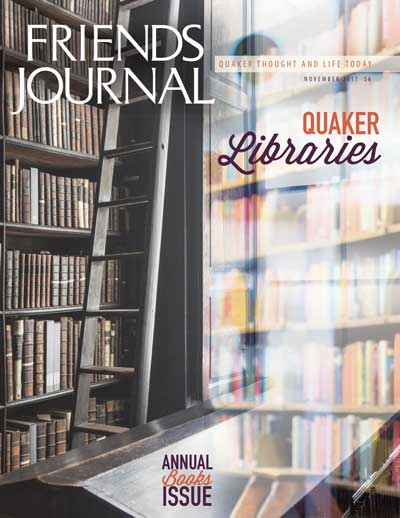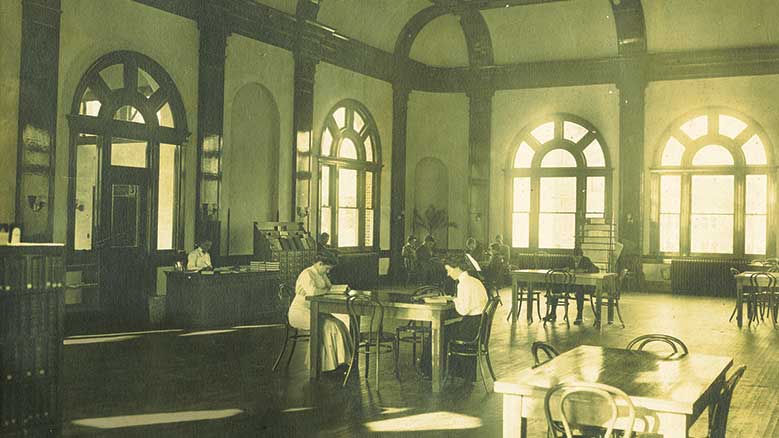Our younger son, who turns five this month, just got his first library card. He’s a voracious reader, and ours is a household that celebrates reading as a virtue and a pleasure, so this marks a joyous milestone for our family: we’re all not just library fans but card-carrying ones. We’re connoisseurs of the children’s sections at many branches of the library system in Philadelphia, where we live, and even our family vacations often find us haunting the local library, like we did in Homer, Alaska, this summer just before a pizza dinner near the beach with extended family and some local Quakers.
At the meeting where I worship, the library is small but well-stocked. It’s computer-free, but we’ve got DVDs available for borrowing (including the QuakerSpeak series) and a handsome rack of Friends Journal issues. Our intrepid library committee reads the book reviews in Friends Journal and regularly adds to the collection, and I don’t think I’m the only one who surreptitiously adds volumes as gifts to our meeting’s literary life. I sometimes worry, though, that if it’s your first time at our meeting, the library is easy to miss, an overlooked gem. It’s difficult, since there’s no librarian on duty, for a visitor to know where to begin, if they should happen to make it inside. But the library, at least, is free of the sense of foreboding that I recognize in the “before” portrait in Ruth McNeill’s “The Transformation of a Small Quaker Library.” Reading along, I felt invested in her valiant struggle to turn her meeting’s library into what it ought to be for her community, so much so that I sighed in satisfaction when reading as she gave her final report on her project to her meeting for business.
Libraries should be spaces that invite discovery, foster serendipity, and help their users feel at the greatest of ease in finding what what they need—whether or not they go in knowing what that is. As the media we use change, we should think, as Gwen Gosney Erickson and her colleagues and students at Guilford College’s Hege Library did, about how a library might change, too. Their story is told in “Library as Metaphor.”
As we put together and plan future issues of this magazine, and future QuakerSpeak videos, we seek to learn as much as we can from what our readers’ and viewers’ behaviors tell us, to pay attention to what they do, not just what they say. If there are books or other resources that seem particularly well used in your library, it’s worth noticing, and worth asking yourself, “Why?” What needs are being met, and what can you do to anticipate and satisfy other needs that follow? What does your library do to meet users where they are and help them move further into an engagement that will help them deepen their spiritual lives and, in turn, deepen yours as a community?
These are queries that shouldn’t just be rhetorical questions. They have answers, and we’re with you, reader, in seeking those out. What are the books you’d replace, time after time, if you found they kept disappearing from your meeting’s library?




Comments on Friendsjournal.org may be used in the Forum of the print magazine and may be edited for length and clarity.